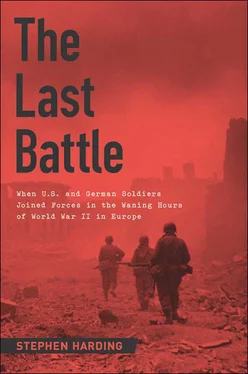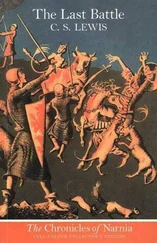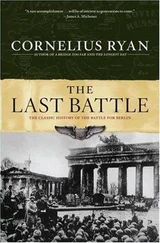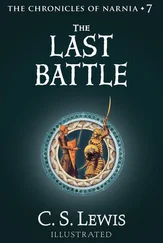The Schloss-Hotel Itter, as it was known, gained both prestige and increasing numbers of well-heeled guests following the end of World War I. The growing popularity of downhill skiing ensured that formerly sleepy villages throughout the Tyrol became popular holiday destinations, and the hamlet of Itter—which enterprising locals quickly dubbed “the Pearl of Tyrol”—was no exception. The castle was far and away the toniest place to lodge while enjoying the area’s winter sports and gradually became almost as popular during the off-season. In 1925 the First Austrian Republic’s deputy governor of Tyrol, Dr. Franz Grüner, bought Schloss Itter, primarily as a venue in which to display his impressive—and vast—collection of artwork and sculpture. Ironically, in 1932 Édouard Daladier, who during World War II would be one of Itter’s VIP prisoners, stayed at the castle while visiting Wörgl to explore the growing city’s experimental issuance of local currency as a way to stimulate economic recovery from the worldwide depression. [12] Widely referred to as the Wörgl Experiment, the effort was the brainchild of the town’s mayor, Michael Unterguggenberger. He sought to economically empower his town and the surrounding region by replacing standard currency with what’s known as “stamp scrip,” a local currency that would remain in use and in circulation rather than being hoarded by bankers. While the idea managed to revive the local Wörgl economy, it was terminated by the Austrian National Bank in 1933.
That depression ultimately helped bring about Adolf Hitler’s rise to power, of course, which in turn led in March 1938 to the Anschluss—Nazi Germany’s annexation of Austria. And that sad event ultimately led directly to Schloss Itter’s transformation from fairytale castle and hotel into something decidedly more sinister.
–———–
FOLLOWING THE ANSCHLUSS, Nazi Germany set about erasing all vestiges of independent Austria—a process that began with the former nation being renamed the German province of Ostmark. [13] This translates literally as “Eastern March,” a reference to Austria’s tenth-century status as a “march,” or buffer, between Bavaria and the Slavs.
The country was divided into seven administrative districts, the Reichsgaue, with Itter and the rest of Tyrol governed by a Nazi functionary based in Vorarlberg, some ninety miles to the southwest.
Life at Schloss Itter remained essentially unchanged for the first few months of the German occupation; the Nazis were too busy absorbing Austria into the “Greater Reich.” One aspect of that absorption—the extension into the former Austria of the Nazi secret police and concentration-camp systems—was to have a direct effect on the castle and those who would later be held there, though it took place outside Itter’s walls.
While the majority of Austrians welcomed the 105,000 troops of Lieutenant General [14] For clarity’s sake, all French, Wehrmacht, and SS ranks in this book are expressed in their U.S. Army equivalents. Von Bock went on to play leading roles in the invasions of Poland, France, and Russia, and was killed on May 4, 1945, when a British fighter-bomber strafed his car.
Fedor von Bock’s 8th Army when they rolled across the border at five thirty in the morning on March 12, 1938, other residents of the newly created Ostmark were less inclined to become citizens of the “Greater Reich.” Anti-Nazi resistance cells began forming throughout Austria soon after the Anschluss, and Tyrol—with its staunch Roman Catholicism, compact geography, and traditional sense of regional identity—quickly became a center of ongoing opposition to German rule and its increasingly onerous regulations. Like other nascent resistance groups throughout Austria, those in Tyrol were initially fragmented by suspicion, and rightly so. The Gestapo [15] An acronym for the full name of the dreaded Nazi secret police, the Geheime Staatspolizei.
was vigorous in its efforts to quash any opposition to Nazi rule and was often aided by pro-German Austrians who were only too willing to inform on neighbors they suspected of being less than wholehearted in their support of the new order.
Despite the Gestapo’s best efforts, resistance cells survived, not only in larger cities such as Vienna, Salzburg, and Innsbruck, but also in towns and villages throughout the country. And while the score of resistance members in Wörgl initially had to bide their time and conserve their limited resources, as did most of their compatriots, they were able, over the months and years of German occupation, to slowly and carefully build the organization that would ultimately play a key role in the Schloss Itter story. And ironically, like the Austrian resistance as a whole, the cell in Wörgl was to be helped in its anti-Nazi efforts by no less an organization than the German army.
Within days of the Anschluss the entire Austrian army, the Bundesheer, was transferred en masse into the Wehrmacht—Nazi Germany’s unified armed forces—an action that for a variety of reasons was welcomed by the majority of Bundesheer troops. [16] See Richard Germann’s excellent essay “Austrian Soldiers and Generals in World War II,” in New Perspectives on Austrians and World War II , ed. Bischof, Plasser, and Stelzl-Marx, for a fascinating discussion of why Austrian soldiers so willingly donned Wehrmacht uniforms.
Moreover, the annexation of Austria created an even larger pool of manpower for Germany; between 1938 and 1945 some 1.3 million Austrian men were drafted into German military service. Austrian soldiers fought in every branch of the German armed forces and on every battlefront, and more than 240,000 of them died in combat or from sickness or accidents. [17] Ibid., 29.
While many Austrians served the Third Reich willingly and even fervently, [18] Among the willing were Otto Skorzeny, the Waffen-SS commando leader who rescued Benito Mussolini from captivity in September 1943, and Ernst Kaltenbrunner, chief of the Reich Main Security Office.
others endured their military duty only because any attempt to avoid conscription or to desert once in the ranks would have resulted in the harshest of punishments. Though the Germans attempted to keep certain Austrians they considered to be unreliable—leftists, nationalists, and others [19] Those considered unreliable included between 30 and 50 percent of all officers in the Bundesheer, who were dismissed. All were closely watched by the Gestapo through the end of the war.
—out of the military, many young men who secretly abhorred the Nazis ended up as “German” soldiers. And in the process of enduring their Wehrmacht time, many anti-Nazi Austrians learned—and extensively practiced in combat—the military skills that in the final months of the war would prove to be so valuable to the Austrian resistance and to the inhabitants of Schloss Itter.
–———–
SOME SOURCES INDICATE that Castle Itter’s transformation from picturesque schloss-hotel and art venue into formidable prison was ultimately carried out at the direct order of Reichsführer der SS Heinrich Himmler himself. Himmler landed at an airfield outside Vienna just hours after German troops crossed the Austrian frontier on March 12, to personally lead the pacification of Austria—a process that would, in Himmler’s view, require the arrest of anyone who might pose even the slightest threat to the new order. The diminutive former chicken farmer therefore took immediate personal control of all existing police forces and of the Austrian SS, which since 1934 had worked covertly to undermine Austrian independence and lay the groundwork for the Anschluss. [20] Luza, The Resistance in Austria , 14.
Читать дальше












